There’s a lot to report this month: promising feelings of inclusion from a new program for interfaith couples; a great discussion of what’s involved in feeling belonging; new Hebrew school research that reflects that feeling unwelcoming is an obstacle; a Conservative rabbi advocates for officiation; a patrilineal teen’s determination to be recognized; the UK progressive movements are now both “equilineal”; negativity about interfaith marriage in an advice column question; a play with “shiksa” in a title song; and commentary on new demographic data about Montreal.
![]() I’m looking forward to participating in the Jewish Belonging Summit sponsored by the Center for Jewish Belonging and SRE Network May 7-8 in Baltimore – especially discussions about advancing “belonging for all Jews and our loved ones.” It will be interesting to see how including interfaith families fits in with the larger agenda of affirming and celebrating the social and cultural diversity of Jewish life.
I’m looking forward to participating in the Jewish Belonging Summit sponsored by the Center for Jewish Belonging and SRE Network May 7-8 in Baltimore – especially discussions about advancing “belonging for all Jews and our loved ones.” It will be interesting to see how including interfaith families fits in with the larger agenda of affirming and celebrating the social and cultural diversity of Jewish life.
Inclusion: New Program, Research, Discussions and Omissions
 Embark is a relatively new program, now part of Mem Global, for young adult interfaith couples. Rabbi Ari Perten of Mem Global and Ezra Kopelowitz, describing their program evaluation, say that Embark addresses the many interfaith couples who often experience “a sense of not fully belonging;” “rather than feeling like guests at Jewish events, [couples] gained the knowledge and confidence to lead rituals, host Shabbat dinners and engage meaningfully with Jewish learning on their own terms.” But “while Embark made them more comfortable in Jewish spaces generally, they still feel like outsiders in synagogue settings or other institutional Jewish environments.” The essay discusses steps to “help ensure that Embark participants feel not just welcomed but truly at home in Jewish life.” Embark seeks to create “a foundation for a more inclusive Jewish future – one where interfaith couples actively choose how they want to participate in Jewish community, rather than simply observing from its margins.”
Embark is a relatively new program, now part of Mem Global, for young adult interfaith couples. Rabbi Ari Perten of Mem Global and Ezra Kopelowitz, describing their program evaluation, say that Embark addresses the many interfaith couples who often experience “a sense of not fully belonging;” “rather than feeling like guests at Jewish events, [couples] gained the knowledge and confidence to lead rituals, host Shabbat dinners and engage meaningfully with Jewish learning on their own terms.” But “while Embark made them more comfortable in Jewish spaces generally, they still feel like outsiders in synagogue settings or other institutional Jewish environments.” The essay discusses steps to “help ensure that Embark participants feel not just welcomed but truly at home in Jewish life.” Embark seeks to create “a foundation for a more inclusive Jewish future – one where interfaith couples actively choose how they want to participate in Jewish community, rather than simply observing from its margins.”
 New research about reinventing Hebrew school (the report, a summary of the report, and an eJP essay) notes the importance of inclusion. The research addresses the 70% of Jewish families who are underserved by Jewish education, “defined as those North American, non-orthodox, self-identifying Jewish and Jewish+ families who currently choose not to affiliate with traditional Jewish institutions or enroll in traditional supplemental Jewish education.” It doesn’t call out interfaith families, but does say “Often, Judaism is but one of multiple identities for these families,” and that some are “parents newly considering Judaism, but they don’t feel welcomed by Jewish institutions.” Traditional Jewish communities are perceived by some as “unwelcoming,” “judgmental,” “closed, insular,” “not always open to interfaith families.” The research makes an important call for an integrated family strategy, which I hope will include fostering feelings of belonging in interfaith families.
New research about reinventing Hebrew school (the report, a summary of the report, and an eJP essay) notes the importance of inclusion. The research addresses the 70% of Jewish families who are underserved by Jewish education, “defined as those North American, non-orthodox, self-identifying Jewish and Jewish+ families who currently choose not to affiliate with traditional Jewish institutions or enroll in traditional supplemental Jewish education.” It doesn’t call out interfaith families, but does say “Often, Judaism is but one of multiple identities for these families,” and that some are “parents newly considering Judaism, but they don’t feel welcomed by Jewish institutions.” Traditional Jewish communities are perceived by some as “unwelcoming,” “judgmental,” “closed, insular,” “not always open to interfaith families.” The research makes an important call for an integrated family strategy, which I hope will include fostering feelings of belonging in interfaith families.
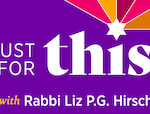 Rabbi Liz PG Hirsch, executive director of Women of Reform Judaism, talked about interfaith inclusion on her podcast with Rabbi Miriam Farber Wajnberg, director of professional development at 18Doors. It’s a very interesting discussion of what belonging means and requires, alluding to maintaining parameters as well as obstacles to inclusion.
Rabbi Liz PG Hirsch, executive director of Women of Reform Judaism, talked about interfaith inclusion on her podcast with Rabbi Miriam Farber Wajnberg, director of professional development at 18Doors. It’s a very interesting discussion of what belonging means and requires, alluding to maintaining parameters as well as obstacles to inclusion.
Steven Windmueller missed an opportunity in “The third stage: An American Jewish revolution is upon us once more.” The first reason he gives for the need to “reinvent the Jewish brand” is that “we are not ‘growing Jews’; that is to say we need to increase our numbers, levels of engagement and our financial base. To do that requires a Jewish awakening that excites and energizes Jews to become involved.” I wish he had explicitly nodded to perhaps the greatest opportunity to increase our numbers: to excite, energize and engage more interfaith families – which requires including their partners from different faith backgrounds.
Obstacles to Inclusion: Attitudes, Patrilineality, and Officiation
 Negative attitudes about interfaith marriage are still with us. Hey Alma’s advice columnist responded to a question from Jewish woman marrying a Jewish man who was worried that his two brothers would intermarry and forget Jewish traditions so that her own future children wouldn’t be able to celebrate Jewish holidays with future cousins. I loved Vanessa Pamela Friedman’s advice:
Negative attitudes about interfaith marriage are still with us. Hey Alma’s advice columnist responded to a question from Jewish woman marrying a Jewish man who was worried that his two brothers would intermarry and forget Jewish traditions so that her own future children wouldn’t be able to celebrate Jewish holidays with future cousins. I loved Vanessa Pamela Friedman’s advice:
“I’m sure you didn’t mean to invalidate all interfaith families with your question, but it is really concerning to me that you’re making assumptions about how these Jewish men will continue to celebrate and honor their Judaism if they end up marrying non-Jewish women. You are experiencing anxiety over a hypothetical issue that may or may not come to fruition, but a lot of people in our community experience real anxiety over the very material judgements and marginalization they experience as patrilineal Jews. So I do find it very, very important to state upfront: Interfaith families who celebrate Judaism in meaningful ways are real, their Judaism is valid and it’s not up to you or anyone else to judge them.”
Related: there’s a song, “Shiksa Goddess,” in a 2001 musical The Last Five Years now playing on Broadway. I’ve always hated the word “shiksa” and agree completely that the song should be removed. I especially agree with the the Forward’s Rukhl Shaechter that “shiksa, even when used with positive intent, comes with demeaning cultural baggage.”
The Canadian Jewish News had an interesting discussion about Montreal’s relatively low but growing rate of interfaith marriage. In 2021 the rate was 22% compared to the Canadian average of 31%, but the number of Jews living in intermarried families grew by 29% in the preceding ten years. Comments by McGill sociologist Morton Weinfeld seem not particularly hospitable to interfaith families: he says research should look into “the quality of the life of those individuals where there’s been no conversion to Judaism, Chrismukkah families. The question often on the table now is to what extent is there space in modern Jewish life in Montreal for these mixed marriages… there are people clearly who will identify as Jewish, but their framework will be different from what it has been in the past. So how will other Jews in the community respond?”
In “I’m Half-Jewish But My Jewish Life Is As Full As It Gets” a patrilineal and very Jewishly-engaged teen gets told by a close family friend “you’re not actually Jewish” but concludes “while I may not fit others’ ideas of a Jewish teen born to Jewish parents, I will not let their comments affect my journey.” She quotes an essay from nine years ago by another patrilineal Jew who’s now a rabbi: “Being Jewish but not having a Jewish mother can be a symbol of a Judaism that is more desirable than a Jewish identity that insists on matrilineal Jewish inheritance or halachic conversion…. The Judaism I favor is a Judaism that is not built on being born into an ethnicity, but instead on choosing to live up to the Jewish covenant and choosing to belong to the Jewish people.”
In the UK, where the two progressive movements, Reform and Liberal, are creating a single Progressive Jewish movement, they call it “equilineality”: “Both movements now have an established route to equilineality, enabling children of one Jewish parent, irrespective of gender, to have recognised Jewish status. Both movements today are built by people of any sexuality. Both are fully egalitarian. Both have become fully able to integrate and build the Jewish lives of mixed faith couples and families.”
“Eight Years Later and We Are Still Lost” is an important contribution by Conservative Rabbi Steven Abraham. “We need to acknowledge openly that the current model – rejecting rabbinic officiation while encouraging outreach – is sending mixed signals that confuse and alienate more than they reassure.”
Also in the news:
A recent 18Doors email newsletter featured “See Me For Who I Am” by Stephanie Zulkoski who describes herself as “one half of an interfaith couple” who has “embraced Jewish traditions and culture.” She describes “small, negative experiences” that cause sadness and frustration and hopes people will become more open-minded and non-judgmental. Her advice: “please do not call me a shiksa”; “I am of a different faith background but would prefer not to be called a ‘non-Jew’”; and please don’t ask me “if I plan to convert.”
“Welcoming Baby” is beautiful advice from Rabbi Jen Gubitz for all Jewishly-engaged or potentially Jewishly-engaged couples.
The Cleveland Jewish News had a nice article with advice from Rabbi Melinda Mersack of jHub about seders for interfaith families (unfortunately termed “interfaith seder” by the reporter).
“My Husband and I Want To Host Passover But His Parents Won’t Let Us” has more good advice from Hey Alma’s Vanessa Pamela Friedman who questions whether part of the husband’s parents’ opposition is because his wife is not Jewish.
Ha’aretz has a story about a bad decision by an Israel ministry denying recognition of Reform and Conservative conversions done in Israel, disregarding a Supreme Court ruling.
We Open the Door for Elijah. Can We Open It for Seekers Too? is about fostering inclusion among those who are drawn to Judaism, but the descriptions are apt for interfaith couples too: “Sometimes the barrier … [is] [l]ingering doubts about who belongs.” “More people are seeking meaning—and many are finding their way toward Judaism. But they’re not always sure the door will open.” “I know what it feels like to be embraced – and what it feels like to be quietly be held at arm’s length.”

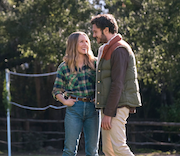 The buzz about “Nobody Wants This” has quieted. My
The buzz about “Nobody Wants This” has quieted. My 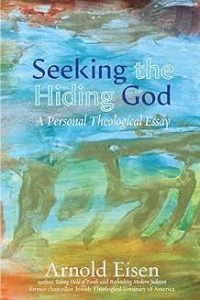 Eisen. Coincidentally, Andy Silow-Carrol
Eisen. Coincidentally, Andy Silow-Carrol  Conservative Rabbi Ari Kaiman, reiterating the view that it is inappropriate for a partner from a different faith background to say the Torah blessings, says:
Conservative Rabbi Ari Kaiman, reiterating the view that it is inappropriate for a partner from a different faith background to say the Torah blessings, says: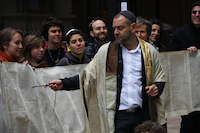 “Sabbath Queen.” At the most inclusive end of the spectrum, “Sabbath Queen,” a new film about Rabbi Amichai Lau-Lavie, is getting a lot of attention. Lau-Lavie, founder of LabShul, was ordained at JTS, but left the Conservative movement to officiate at weddings of interfaith couples. A
“Sabbath Queen.” At the most inclusive end of the spectrum, “Sabbath Queen,” a new film about Rabbi Amichai Lau-Lavie, is getting a lot of attention. Lau-Lavie, founder of LabShul, was ordained at JTS, but left the Conservative movement to officiate at weddings of interfaith couples. A 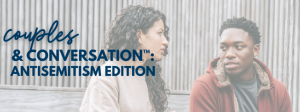 18Doors’ board chair, Laurie Beijen, and chief program officer, Adam Pollack,
18Doors’ board chair, Laurie Beijen, and chief program officer, Adam Pollack,  Jack Wertheimer addresses the impact of October 7 and resurgent antisemitism on American Jews in “
Jack Wertheimer addresses the impact of October 7 and resurgent antisemitism on American Jews in “ Hey Alma’s advice columnist tackles
Hey Alma’s advice columnist tackles  I am apparently the unnamed “HUC critic” in Dr. Steven Windmueller’s essay,
I am apparently the unnamed “HUC critic” in Dr. Steven Windmueller’s essay,  In
In  Finally, at an even more progressive end of the spectrum, we have
Finally, at an even more progressive end of the spectrum, we have 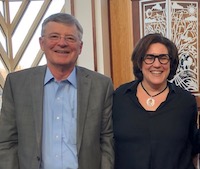 On June 18, 18Doors announced that Jodi Bromberg was stepping down as CEO, and a national search to fill her position was underway. As the founder of what used to be known as InterfaithFamily, I care a great deal about the ongoing health and growth the organization. I hired Jodi to be my successor and I have always thought she did a great job of maintaining the organization and keeping it going. I didn’t agree with every change, but the website and officiation referral service are tremendously improved, the Rukin Rabbinic Fellowship is a jewel, and she built a strong and engaged board.
On June 18, 18Doors announced that Jodi Bromberg was stepping down as CEO, and a national search to fill her position was underway. As the founder of what used to be known as InterfaithFamily, I care a great deal about the ongoing health and growth the organization. I hired Jodi to be my successor and I have always thought she did a great job of maintaining the organization and keeping it going. I didn’t agree with every change, but the website and officiation referral service are tremendously improved, the Rukin Rabbinic Fellowship is a jewel, and she built a strong and engaged board. There was a second annual Re-charging Reform conference this month, where most of the discussion understandably was
There was a second annual Re-charging Reform conference this month, where most of the discussion understandably was  The URJ website had a nice
The URJ website had a nice  The second (perhaps annual?) Re-CHARGING Reform Judaism conference is being held May 29 and 30. As I
The second (perhaps annual?) Re-CHARGING Reform Judaism conference is being held May 29 and 30. As I  We’ve expressed before the hope that “peoplehood” will be understood to include partners from different faith backgrounds, as well as their families. Our group under threat needs to be as broad as possible, with as many allies as possible.
We’ve expressed before the hope that “peoplehood” will be understood to include partners from different faith backgrounds, as well as their families. Our group under threat needs to be as broad as possible, with as many allies as possible. This article in the New York Times, “
This article in the New York Times, “ Last month we
Last month we 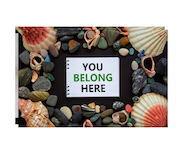 “
“ The UK Institute of Jewish Policy Research issued a new
The UK Institute of Jewish Policy Research issued a new  The Center is proud to have signed up to be a distribution
The Center is proud to have signed up to be a distribution 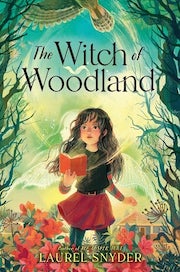 Laurel Snyder, an award-winning author of children’s books who grew up with a Jewish father and a Catholic mother, wrote a beautiful
Laurel Snyder, an award-winning author of children’s books who grew up with a Jewish father and a Catholic mother, wrote a beautiful 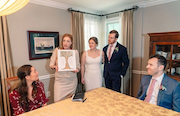 Coincidentally, JTA had an earlier interesting
Coincidentally, JTA had an earlier interesting 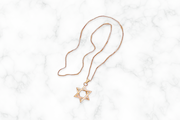 More stories are starting to appear about the impact on people in interfaith relationships of Israel’s war against Hamas and increasing expressions of antisemitism. In “
More stories are starting to appear about the impact on people in interfaith relationships of Israel’s war against Hamas and increasing expressions of antisemitism. In “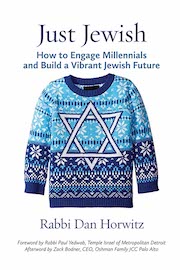 What we appreciated about the book is the matter-of-fact acknowledgment of the prevalence of interfaith relationships and seeing them as an opportunity. This starts with the Introduction: “Jewish Millennials are globally connected, have mostly non-Jewish friends, and are living in interfaith households at an incredibly high clip (whether as products of an interfaith marriage and/or in one themselves).” Or the book’s end, “For those concerned about Jewish continuity, the math argues for viewing interfaith marriages as a Jewish communal growth opportunity.”
What we appreciated about the book is the matter-of-fact acknowledgment of the prevalence of interfaith relationships and seeing them as an opportunity. This starts with the Introduction: “Jewish Millennials are globally connected, have mostly non-Jewish friends, and are living in interfaith households at an incredibly high clip (whether as products of an interfaith marriage and/or in one themselves).” Or the book’s end, “For those concerned about Jewish continuity, the math argues for viewing interfaith marriages as a Jewish communal growth opportunity.” eJewishPhilanthropy
eJewishPhilanthropy  Dr. Staetsky says that “the definition of Jewishness dictated by Jewish law… is broadly accepted by all Jews, while the modifications to it, or expansions, are not.” That’s the root of the problem – the traditional perspective doesn’t tolerate inclusion of interfaith couples or their children. It views high rates of interfaith marriage as a problem, a failure. Comparing the rate of all married Jews who are intermarried, the IJPR study finds the US in the middle of the pack at 45%, compared to Israel at 5% and Poland at 76%; a self-congratulatory
Dr. Staetsky says that “the definition of Jewishness dictated by Jewish law… is broadly accepted by all Jews, while the modifications to it, or expansions, are not.” That’s the root of the problem – the traditional perspective doesn’t tolerate inclusion of interfaith couples or their children. It views high rates of interfaith marriage as a problem, a failure. Comparing the rate of all married Jews who are intermarried, the IJPR study finds the US in the middle of the pack at 45%, compared to Israel at 5% and Poland at 76%; a self-congratulatory  More evidence of the persistence of traditional attitudes is
More evidence of the persistence of traditional attitudes is  Sandy pointed me to new text on the Global Jewry website: “We believe in inclusivity and embrace Jews of all backgrounds, affiliations, and levels of observance. Whether you’re Orthodox, Conservative, Reconstructionist, Reform, Just Jewish, exploring your Jewish identity or supporting your Jewish partner, you’ll find a warm and accepting space here.”
Sandy pointed me to new text on the Global Jewry website: “We believe in inclusivity and embrace Jews of all backgrounds, affiliations, and levels of observance. Whether you’re Orthodox, Conservative, Reconstructionist, Reform, Just Jewish, exploring your Jewish identity or supporting your Jewish partner, you’ll find a warm and accepting space here.” I liked a
I liked a